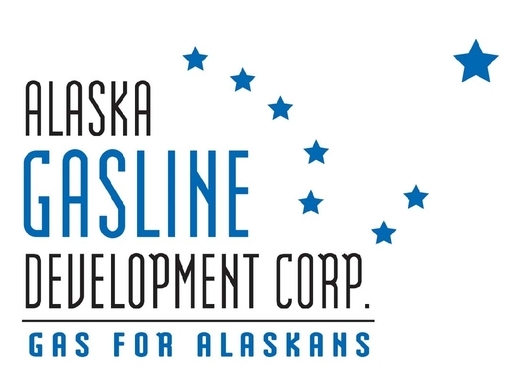Korean buyer eyes Alaska LNG but also signs deals with competitors

Alaska’s giant gas export project has signed a preliminary deal with a major South Korea buyer that could set the stage for a multibillion-dollar development partnership.
Or it might lead to nothing at all.
The agreement is nonbinding. And the potential buyer, Korea Gas Corp., owned by South Korea, announced a flurry of similar deals with other U.S. gas-export projects. The announcements came last week, amid meetings between President Donald Trump and South Korea’s new president, Moon Jae-in.
A statement Thursday by the Alaska Gasline Development Corp. called the agreement a “positive signal” for the project. The statement, emailed by AGDC communications manager Jesse Carlstrom, said it is AGDC’s first memorandum of understanding with a potential LNG buyer.
“AGDC is honored to be in this group of significant new projects,” the statement said.
But the June 28 memorandum, involving the $43 billion Alaska LNG project, doesn’t provide any financial support to Alaska from the Korean corporation, known as KOGAS.
The memorandum of understanding means Korea Gas is interested in learning more about the Alaska LNG project, said Larry Persily, oil and gas adviser to Kenai Peninsula Borough Mayor Mike Navarre.
MOUs are “commonly used to share information without committing either party to spending money,” Persily said.
But they’re “almost as common as legislative pledges for a long-term fiscal plan.” In other words, they may result in a multibillion-dollar commitment. Or not.
The agreement would help guide potential development and operations involving KOGAS, the world’s second-largest buyer of LNG, and the Alaska agency, AGDC said in a statement last week.
The deal could one day allow KOGAS to participate in the project at all levels, including construction, if a contract is signed and if the Federal Energy Regulatory Commission approves the state’s application for the project, submitted in April.
AGDC President Keith Meyer said the agreement “lays the groundwork for a significant relationship” between Alaska and South Korea. But Meyer said the memorandum recognizes AGDC is talking with other potential partners, the June 29 statement said.
The project — to deliver liquefied North Slope gas to Asian buyers starting between 2023 and 2025 — faces steep competition, including from some of the world’s largest oil companies. North Slope oil producers ExxonMobil, BP and ConocoPhillips were sponsors of the Alaska LNG project but backed out last year citing concerns that it wasn’t competitive globally. The competition includes projects those same companies are pursuing elsewhere in the world.
Kristy Kramer, head of Americas gas research for the analysis firm Wood Mackenzie, said on Thursday the firm counted three other deals that KOGAS signed with other proposed gas-export projects announced about the same time the Alaska LNG deal was unveiled last week.
She said KOGAS also signed MOUs with Energy Transfer and Shell, at a project in Lake Charles, Louisiana; with Sempra Energy and Woodside Petroleum at a Port Arthur, Texas, project; and with ExxonMobil, which is involved in a project in Sabine Pass, Texas.
There’s not enough information available to objectively evaluate Alaska’s chances of landing a firm contract with KOGAS, she said.
“It’s not obvious that one (MOU) is necessarily better than another,” Kramer said. “These are (simply) announcements of intent to study.”
AGDC said Thursday Alaska’s proximity to Asia offers an advantage over the Gulf Coast projects that signed MOUs.
“Being the only project on the West Coast in that portfolio is a meaningful opportunity for Alaska LNG,” the statement said. “It presents a distinct business case for KOGAS with a shorter and direct shipping route, and a proven natural gas source that is not connected to the North American pipeline network, giving it greater pricing flexibility.”
New LNG projects worldwide have contributed to a supply glut, encouraging buyers to pursue the lowest prices possible, Persily said.
AGDC officials have said a “demand window” will open in the mid-2020s as some existing contracts are expected to end.
Ten LNG export projects in the United States, including Alaska LNG, have pending applications before the Federal Energy Regulatory Commission. Four other U.S. projects in the are currently in pre-application, data-collecting phases before the agency.
Several other LNG projects are in the works domestically and outside the U.S.
The KOGAS deals coincided with South Korea President Moon’s visit to the United States last week and his White House meetings with Trump.
After participating in an energy roundtable with Trump, Gov. Bill Walker met with Moon in Washington, D.C., on June 28 to discuss trade with South Korea that already includes coal and fish, the governor’s office said last week.
“President Moon said he would like to add LNG to the list of imports, and offered his government’s support of the AKLNG project,” Walker said in a statement last week.